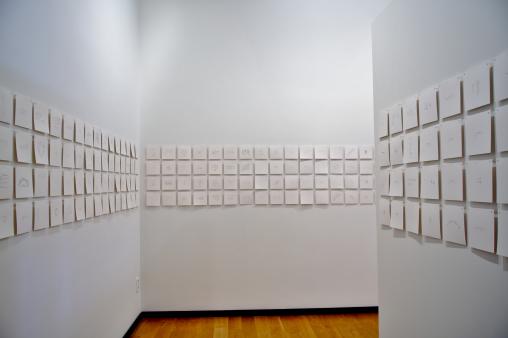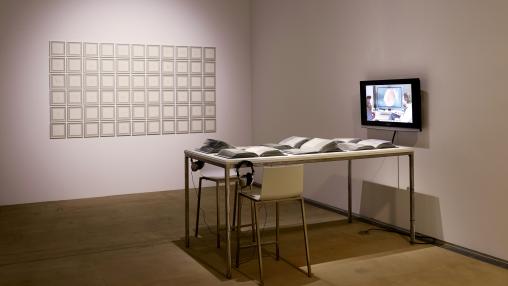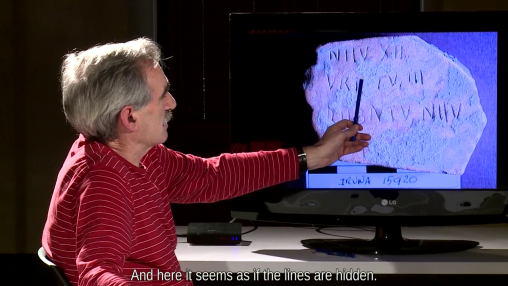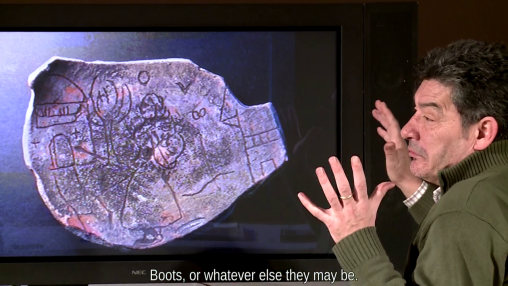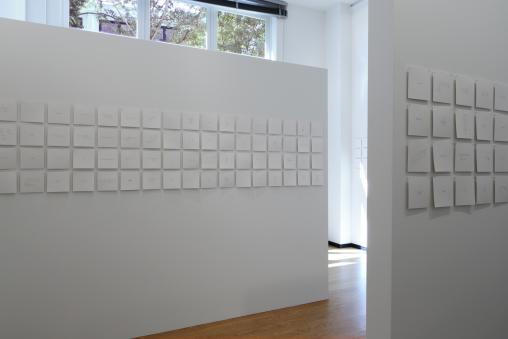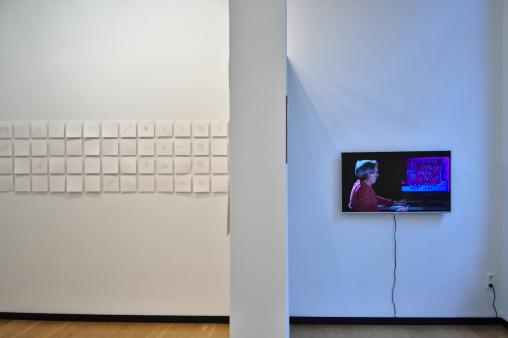Nire ama Roman hil da (My mother died in Rome)
Nire ama Roman hil da (My mother died in Rome) is an installation that consists of handmade facsimiles of the "exceptional" graffiti discovered in Iruña-Veleia, an archaeological site in Basque Country, and a video in which the inscriptions are deciphered by different experts in favour of, or opposing, the theory that they are forgeries.
In 2006, the director of the archaelogical site Iruña-Veleia, in Basque Country in the north of Spain, announced a sensational discovery. It consisted of a series of texts and drawings carved into potsherds and bone, dated between the third and fifth century AD. These included egyptian hieroglyphs, latin texts and what appeared to be the earliest known evidence of written Basque.
Two years later, a committee of academic experts concluded that the findings were false, and “the product of an elaborate hoax”. Charges of fraud and destruction of cultural heritage were brought against members of the archaeological team, and the artifacts were impounded by the police as criminal evidence.
The verdict was hotly debated on internet forums, resulting in thousands of message board posts and the emergence of an advocacy group denouncing the precipitation of judgment and pressuring for a more rigorous and impartial investigation into the authenticity of the artifacts.
Buried beneath the chaos of opinions in this polemic, and beyond the binary opposition between false and genuine, lie fundamental questions concerning the relationship between authority and knowledge. What are the processes that establish an object's usefulness in the construction of a historical narrative? What role does the collective imaginary play in determining its value?
Nire ama Roman hil da (My mother died in Rome) catalogs the inscriptions from the pieces that were selected by the police as criminal evidence, and makes use of their inconclusive status to address these questions, and investigate institutional claims of expertise, power and experience in public discourse.
The project has been realized with financial support from:
Fabra i Coats Centre d'Art Contemporani de Barcelona in connection to the exhibition "The Text: First Notions and Findings - Chapter III: Manifesto. Manifesto. Art today, facing the doubts" curated by Marti Manen and David Armengol.![]() CBK Rotterdam, (Centre for Visual Arts Rotterdam)
CBK Rotterdam, (Centre for Visual Arts Rotterdam)
